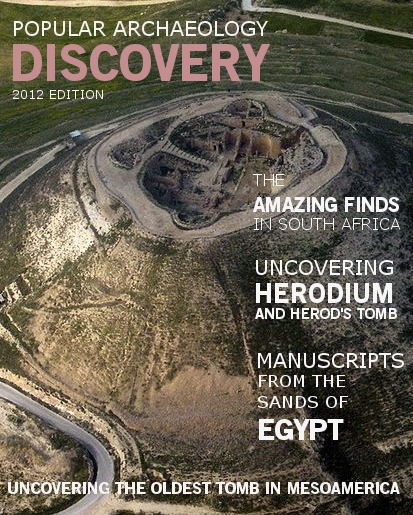
You can’t always tell a book by its cover, as the saying goes. Scientists are now discovering that the same principle applies to ancient cities that have been shrouded for centuries beneath jungle canopies. And Angkor, the famous capital of southeast Asia’s largest ancient empire and thought by many to have already long revealed its secrets, is apparently no exception.
Led by archaeologist Damian Evans of the University of Sydney, Australia, a research team has visually peeled away the forest and other vegetation covering the landscape of Angkor Wat in northwestern Cambodia by using a new set of eyes — a state-of-the-art technology known as LiDAR (Laser Interferometry Detection and Ranging) — a system that uses laser pulses from an airborn platform, such as a helicopter, to reveal what the earth’s surface looks like below heavily forested areas. What they found was staggering.
“We found that this nicely formally planned grid extends for 35 square kilometers, rather than the 9 kilometers that had previously been mapped from the ground,” he said. “Angkor has been considered to be (among the) cities enclosed by moats or walls, but we found that the town area of the city grids extends far beyond the moat spaces.”
And for the first time, using LiDAR, archaeologists were able to create a map of Angkor’s hidden streets. They also found something unexpected — a series of features which appeared to be embankments at a level of 10 to 15 meters high, layed out in a spiral pattern. Each bank measured a meter in height. “We are not sure what they are,” Evans said.
But it was not just the size of the city that has amazed researchers. This was a city designed with a plan. The streets ran in a grid exactly east/west or north/south. Each city block was measured exactly 100 meters by 100 meters, with 4 dwellings and 4 rectangular ponds, each pond located north-east of each dwelling. The dwellings, elevated on earthen mounds, were higher than the surrounding rice fields, presumably so they wouldn’t flood during the rainy season. The roads were likewise elevated.
Perhaps the biggest take-away is the implication that Angkor contained a larger population than previously thought. The newly discovered urban landscape extended for 35 square kilometers, capable of supporting a population of 750,000 to a million inhabitants, according to the new analysis. “Angkor was a city the size of New York and that’s impressive in the ninth century,” said Francisco Goncalves. Goncalves is president of McElhanney Indonesia, the company that adapted the LiDAR system for the research project.
The finding has shed additional light on the latest thinking about how Angkor met its end. Scholars now theorize that as the city’s population grew, it became increasingly more difficult for the surrounding agriculture to support the urban population. “You would have had a very large population that was not devoted to producing rice,” said Evans. “So they relied on consistent yields of the agricultural hinterland.” According to Michael Coe, a world-renowned archaeologist who authored a book about Angkor, a large population may have also been responsible for the decision to move the Khmer capital to another area in the 14th century. “They overused the land and probably caused a great amount of erosion, clogged up the canals and the whole irrigation system would have collapsed,” he said. This is the result, he maintained, “when populations grow beyond the agricultural capacity of the land.”
Cover Photo, Top Left: View of Angkor Wat. David Sim, Wikimedia Commons
______________________________________________________________________________________________________________________
Read a detailed feature article with images about the new findings at Angkor, which includes the discovery of Cambodia’s “Lost City”, as well as other fascinating discoveries with a premium subscription to Popular Archaeology Magazine. Find out what Popular Archaeology Magazine is all about. AND MORE:
 Popular Archaeology’s annual Discovery edition is a selection of the best stories published in Popular Archaeology Magazine in past issues, with an emphasis on some of the most significant, groundbreaking, or fascinating discoveries in the fields of archaeology and paleoanthropology and related fields. At least some of the articles have been updated or revised specifically for the Discovery edition. We can confidently say that there is no other single issue of an archaeology-related magazine, paper print or online, that contains as much major feature article content as this one. The latest issue, volume 2, has just been released. Go to the Discovery edition page for more information.
Popular Archaeology’s annual Discovery edition is a selection of the best stories published in Popular Archaeology Magazine in past issues, with an emphasis on some of the most significant, groundbreaking, or fascinating discoveries in the fields of archaeology and paleoanthropology and related fields. At least some of the articles have been updated or revised specifically for the Discovery edition. We can confidently say that there is no other single issue of an archaeology-related magazine, paper print or online, that contains as much major feature article content as this one. The latest issue, volume 2, has just been released. Go to the Discovery edition page for more information.
Subscription Price: A very affordable $5.75 for those who are not already premium subscribers of Popular Archaeology Magazine (It is FREE for premium subscribers to Popular Archaeology). Premium subscribers should email populararchaeology@gmail.com and request the special coupon code. Or, for the e-Book version, it can be purchased for only $3.99 at Amazon.com.



